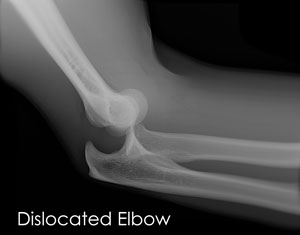Elbow Dislocation

The elbow is a hinge joint made up of 3 bones – humerus, radius and ulna. The bones are held together by ligaments to provide stability to the joint. Muscles and tendons move the bones around each other and help in performing various activities. Elbow dislocation occurs when the bones that make up the joint are forced out of alignment.
Elbow dislocations usually occur when a person falls onto an outstretched hand. Elbow dislocations can also occur from any traumatic injury such as motor vehicle accidents. When the elbow is dislocated you may have severe pain, swelling, and lack of ability to bend your arm. Sometimes you cannot feel your hand, or may have no pulse in your wrist because the arteries and nerves running along your elbow may be injured.
To diagnose elbow dislocation Professor Bain will examine your arm, check the pulses at the wrist and will evaluate the circulation to the arm. An X-ray is necessary to determine if there is a break in the bone.
An elbow dislocation is a serious injury and therefore requires immediate medical attention. At home, you may apply an ice pack to the elbow to ease pain and swelling. However, it is important to see Professor Bain for help.
Professor Bain will put your dislocated elbow back in place by pulling down your wrist and levering your elbow. This procedure is known as reduction. As it is a painful procedure you may be given medications or anaesthetic to relieve your pain before the procedure. After the reduction, you may have to wear a splint to immobilise your arm at the elbow. After few days, you may also need to do gentle motion exercises to improve the range of motion and strength.


